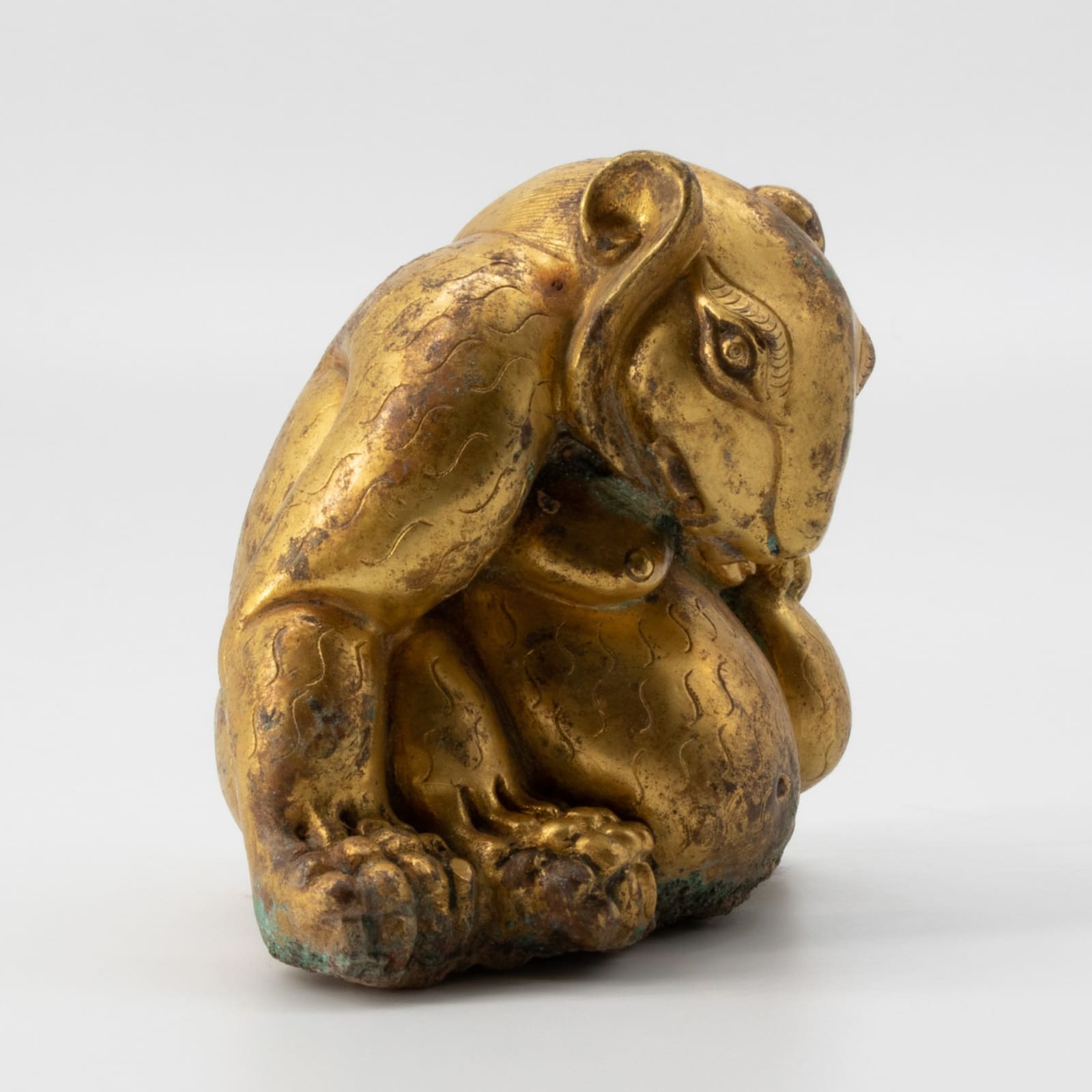Figure of a Seated Bear, 206 BCE - 220 CE
Gilt bronze
height 9 cm
height 3 1/2 in
height 3 1/2 in
ES.9272
Further images
The seated figure is shown with head lowered and mouth rested, the fleshy body finely incised with wavy lines suggesting fur, and with finer, more closely arranged lines defining the...
The seated figure is shown with head lowered and mouth rested, the fleshy body finely incised with wavy lines suggesting fur, and with finer, more closely arranged lines defining the brows, ruff and edges of the forelegs and small tail. This small but exceptionally compelling gilt-bronze sculpture represents a plump bear seated on its haunches in a moment of repose. At peace with itself and with the world, the bear appears to be enjoying the moment and is wholly lacking in the ferocity that typifies most Han-dynasty representations of bears, tigers, and other wild beasts, marking this as an astonishingly rare and very naturalistic sculpture.
The bear has been a popular totemic emblem in China since ancient times. Chinese foundation mythologies hold that the legendary Yellow Emperor, farmed and tamed six species of feral beasts, including the bear, of which the Emperor has since been linked. Similarly, according to legend, Gun, the Yellow Emperor's great-grandson was reincarnated into a golden bear, and as a result of this is known as the forefather of the Chinese Xia Dynasty. Thus, even if the significance of the bear has never been explicitly stated, this animal has been prominently associated with legendary rulers and national foundation myths since the earliest times. In modern-day China, however, the bear is often associated with military prowess, shamanism and immortality.
The Han Dynasty (206 BCE-220 CE) was the second imperial dynasty of China and one of the longest major dynasties in Chinese history. In modern terms of military and political power and cultural prestige, the Han Dynasty is currently considered to have rivalled its almost contemporary Roman Empire in the West. With only minor interruptions it lasted a span of over four centuries and was considered a golden age in Chinese history especially in arts, politics and technology. All subsequent Chinese dynasties looked back to the Han period as an inspiring model of a united empire and self-perpetuating government.
The bear has been a popular totemic emblem in China since ancient times. Chinese foundation mythologies hold that the legendary Yellow Emperor, farmed and tamed six species of feral beasts, including the bear, of which the Emperor has since been linked. Similarly, according to legend, Gun, the Yellow Emperor's great-grandson was reincarnated into a golden bear, and as a result of this is known as the forefather of the Chinese Xia Dynasty. Thus, even if the significance of the bear has never been explicitly stated, this animal has been prominently associated with legendary rulers and national foundation myths since the earliest times. In modern-day China, however, the bear is often associated with military prowess, shamanism and immortality.
The Han Dynasty (206 BCE-220 CE) was the second imperial dynasty of China and one of the longest major dynasties in Chinese history. In modern terms of military and political power and cultural prestige, the Han Dynasty is currently considered to have rivalled its almost contemporary Roman Empire in the West. With only minor interruptions it lasted a span of over four centuries and was considered a golden age in Chinese history especially in arts, politics and technology. All subsequent Chinese dynasties looked back to the Han period as an inspiring model of a united empire and self-perpetuating government.





